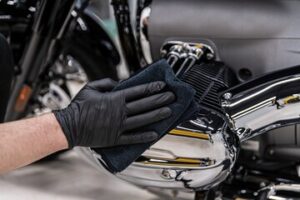Natalie Wood was a movie star who didn’t let Hollywood bosses determine her career. She had the moxie to challenge Jack Warner and choose roles she wanted to make, including West Side Story.

The documentary interviews her daughter, Natasha Gregson Wagner, as well as friends and family (including Mia Farrow and Elliott Gould). But it focuses on the inescapable subject of her drowning on a weekend boat trip with husband Robert Wagner and co-star Christopher Walken in 1981.
A delightfully charming movie about a department store Santa Claus, Miracle on 34th Street became a beloved Christmas classic. Its star, Natalie Wood, was nominated for an Oscar and won a Golden Globe. The film also featured a fine supporting cast that included Elizabeth Perkins, Dylan McDermott, and Mara Wilson. This was the first time that Wood had a leading role as opposed to a supporting one, and her performance was lauded.
The actress was only 24 at the time of its release, and she had already established herself as a major star. However, she was a victim of tabloids in her personal life as well as the public’s distorted interest in her career. She reportedly struggled to maintain her privacy after the success of this film and found it difficult to cope with the constant intrusions on her family life and work.
This was one of the last films that Natalie Wood starred in before her death. After this, she took a hiatus from acting and only briefly returned to the screen in the ensemble disaster film Meteor (1979) with Sean Connery and the sex comedy The Last Married Couple in America (1980). The latter was a controversial and groundbreaking role for the actress, who used the word “fuck” during a frank discussion with her husband George Segal.
Even though Miracle on 34th Street is a Christmas classic, it was actually released in the summer of 1947. Early promotional materials emphasized the smiling faces of Wood and co-star John Payne, with nary a snowflake in sight. Edmund Gwenn, who played Kris Kringle, was relegated to the background. It wasn’t until the film was released that audiences learned about his amazing performance in this classic movie.
Rebel Without a Cause
Daring for its era, Rebel Without a Cause showed 1950s viewers that nice middle-class suburban kids could go wrong too. In the film, Jim Stark (James Dean) arrives at a new high school with his family and soon befriends sensitive misfits Plato (Sal Mineo) from a troubled home and Judy (Natalie Wood), who leads a gang-like clique of rebels. Eventually, she and Jim get involved in a dangerous nocturnal drag-race duel in stolen cars that ends with tragic consequences.
The film also sparked outrage and even threats of censorship for its exploration of teenage sexuality. While today it may seem dated in its depiction of teenage rebellion, it is still a compelling story that benefits from a strong cast. Dean and Wood are both excellent in their performances, with the latter displaying an astonishing emotional range that makes her performance even more powerful. Mineo is equally impressive, crafting a character who is both overwrought and touching.
Adding to the value of this 4K release is a terrific audio mix that emphasizes the movie’s dramatic score and allows its acoustic elements to come through clearly. The transfer is sharp and detailed, with rich colors and strong contrast.
Extras include an in-depth commentary by screenwriter Stewart Stern and a documentary called Defiant Innocents that discusses how the film developed. The featurette also features interviews with Natalie Wood and James Dean. Hopper is an engaging interviewee, and while his stories about his relationship with Dean can be a bit salacious, it is clear that he had enormous respect for his costar. A handful of deleted scenes with sound, black-and-white wardrobe tests and some fairly staged behind-the-scenes footage round out this fine release.
Splendor in the Grass
This 1961 melodrama about a small-town girl’s love for her high school football star seems very much of its time. Both the 1920s setting and the film’s Actors Studio production make clear its roots. But despite its age, it has become timeless because of its central performances and nuanced script. The story of Wilma Dean “Deanie” Loomis’ obsession with Bud Stamper (Warren Beatty) shows that even wholesome people can be driven to emotional instability, if not outright madness. In the end, a love affair that was forbidden by class and social mores drives Deanie to a suicide attempt that is both shocking and poignant.
It would be easy to argue that Splendor in the Grass is a cautionary tale of the dangers of loose morals and sexual freedom, but that is too simplistic. Instead, the movie illustrates how insidious and intangible forces can be, weighing down young minds with the weight of social expectation. The film also makes it clear that the most damaging blow to a youth’s self-esteem is not a physical assault but the rejection of their innermost desires.
Wood’s performance is nothing short of astounding, and she carries off both fits of hysteria and the agonizing breakdown with grace and strength. She is aided by her co-stars, especially Beatty who makes his big-screen debut as Bud. Both he and Wood are backed by solid supporting performances from Audrey Christie (Deanie’s mother) and Pat Hingle (Bud’s father).
The film’s final scene is perhaps the most iconic of its kind in cinema history. It echoes William Wordsworth’s phrase, “Poetry is the spontaneous overflow of powerful feelings.” Ultimately, though, it is Wood’s beauty and radiance that give the movie its transcendent sense of purity and strength.
West Side Story
After a decade of success as the daughter in family films, including Fred MacMurray’s daughters in Father Was a Fullback and Dear Brat, Wood moved to adult roles. Her role as Maria in Jerome Robbins’ and Robert Wise’s 1961 West Side Story, a modern allegory of Romeo and Juliet set among youth gangs and juvenile delinquency, was both a critical and box-office triumph.
Unlike her other roles, Wood sang and danced in West Side Story. However, her singing voice was dubbed by Marni Nixon, who had also dubbed Deborah Kerr’s singing voice in The King and I. Wood only learned of her dubbed performance on the final day of production, and was devastated.
Although she had a successful career, it was during this period that Wood’s private life began to crumble. She married actor Robert Wagner in 1957, a union that her mother vehemently opposed. They separated after two years and divorced in 1962. In 1969, she married British producer Richard Gregson, with whom she had a daughter, Natasha. Despite their rocky relationship, Wood and her daughter were the focus of media attention for their apparent closeness.
For her role in West Side Story, Wood earned an Oscar nomination. Her subsequent career hiatus included appearances in the ensemble disaster film Meteor (1979) with Sean Connery and a sex comedy called The Last Married Couple in America (1980). Her work in these films broke ground for an actress with a clean, middle-class image; she used the word “fuck” during a frank marital discussion with her husband (Segal). The film also marks her first starring turn as an older woman, a milestone that would become a trademark of her later work.
Gypsy
Naomi Watts can usually be counted on for a level of acting that’s at once both believable and affecting, but her talents were wasted on the clumsy scripts in this Netflix series about a Manhattan therapist with a taste for stalking. The show’s premise promises plenty of taboo drama and no shortage of conflict, but it never rises above the merely titillating. Jean Holloway, played by Watts, is a successful therapist with the kind of picture-perfect life it’s almost mandatory for characters to rebel against: she has an easygoing lawyer husband (Billy Crudup), a rambunctious daughter, and a beautiful home in Connecticut.
But beneath the surface, her quiet prosperity conceals a host of neuroses that begin to fester as she grows increasingly bored with her routine and begins to creep into her patients’ lives. Her sleuthing is most focused on Sidney, an ex-girlfriend who lives in a chichi suburb. It’s a little like In Treatment with more erotic intrigue, but it’s also a drowsy, unfocused lark that seems less necessary with every passing episode.
The cast—which includes Fifty Shades director Sam Taylor-Johnson as a thriller writer and TV veteran Scott Winant as Jean’s husband—works hard, but their performances are undermined by the incompetent writing. The pacing is logical but never suspenseful, and the characterizations are so muddled that even the most subtle hints are lost. It’s a shame that this fine cast was saddled with such a dull and predictable drama, but it’s just another example of streaming drift, where talented actors are stranded in a story that becomes less interesting with each passing hour. If you’re determined to watch it anyway, just be prepared for a long haul.

